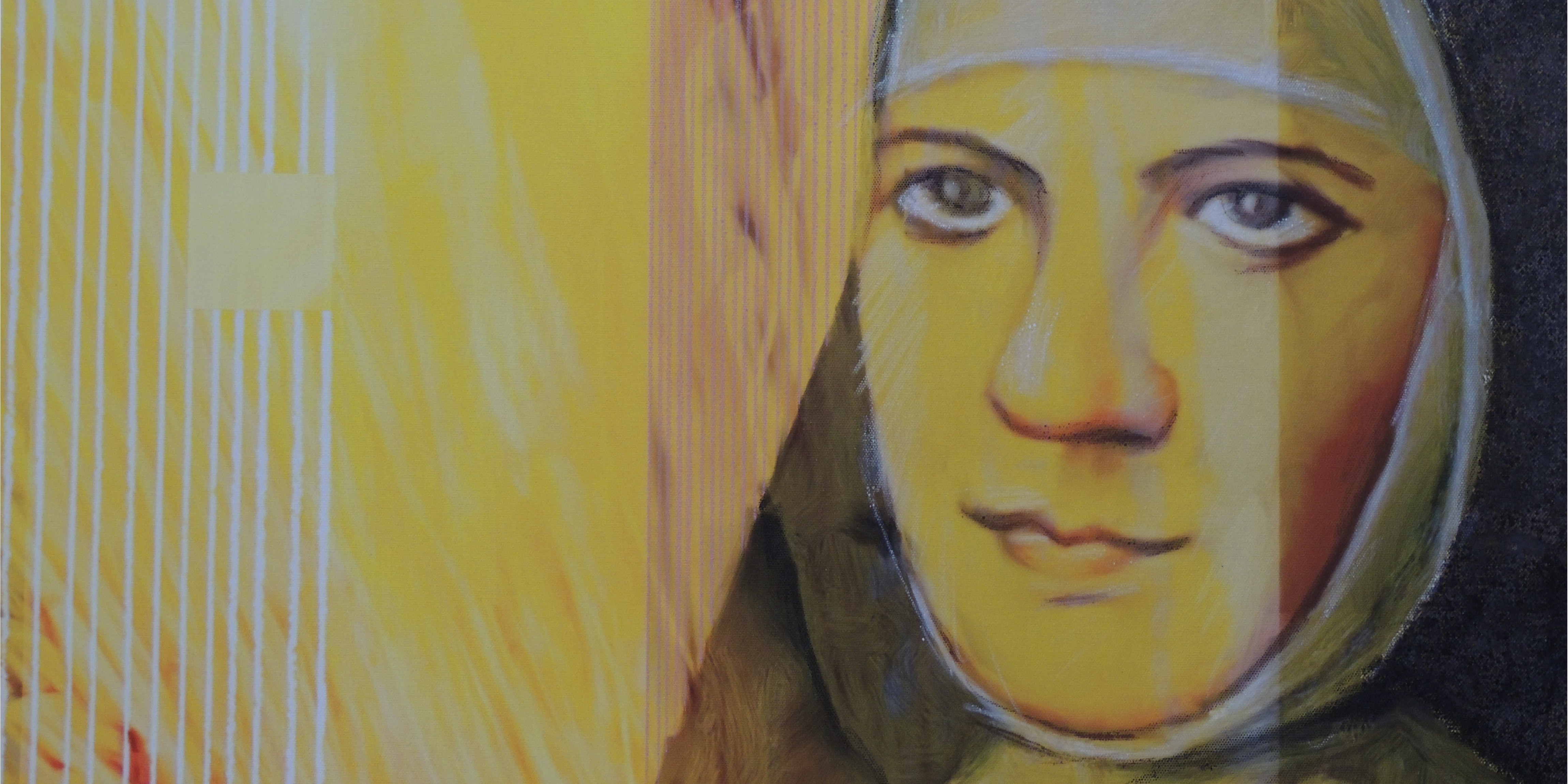History
The Congregation of the Sisters of the Divine Redeemer was founded on August 28, 1849, by Elizabeth Eppinger, Blessed Mother Alphonse Marie, in the spa town of Niederbronn, Alsace, eastern France. The Foundress lived in a deep unity with God since her childhood. Moved deeply by the mystery of Redemption and by the love of God, Mother Alphonse Marie knew that she and all people are totally accepted and loved by God.
Guided by the Spirit of God she perceived to help people, especially the poor and sick, together with her fellow sisters in the needs of the time through various services. She wanted to give them the experience of redemptive love of God and hope for their lives. In the Spirit of Jesus and concerned about the salvation of the whole person she and her sisters attempted to nurse the sick in their homes, to support the poor, to care for and educate orphans, to support the helpless and to tend those to who had no one to care for them.
This was done in the spirit of Holy Scripture: “Whatever you did to least of my brethren, you did it to me” (Mt 25:40).
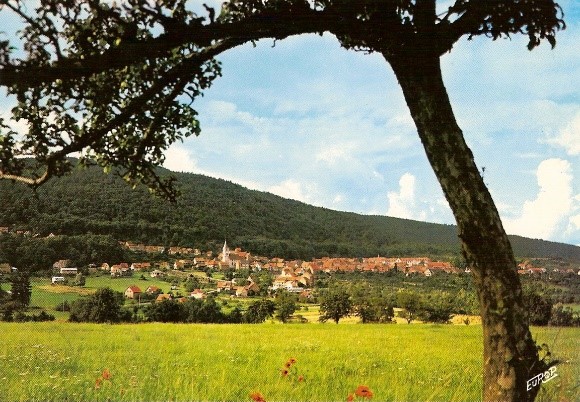
Niederbronn, France
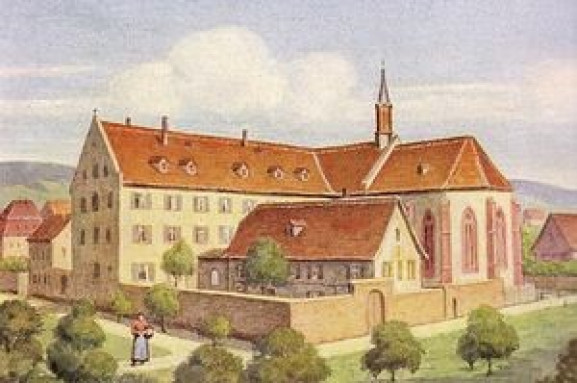
The Little Cloister (Niederbronn) 1840
and the new building in 1852
One by one sisters joined the Community and the Congregation spread rapidly. The work of the sisters was highly accepted everywhere. Bishops asked Mother Foundress to send sisters to Würzburg, Vienna and Sopron. According to the circumstances of the time and place, several independent branches developed from this foundation living the spirituality of Mother Alphonse Marie until now. Our religious community was an independent Congregation since 1867 with its Motherhouse in Sopron, Diocese Gyor, in Hungary. In 1955 the headquarters of the General Administration had to be moved to Rome because of the political situation in Hungary. The spiritual contacts and relationship with the Sisters of the communities still exist from the founding in Niederbronn and are still growing.
Unsere Ordensgemeinschaft ist seit 1867 eine selbstständige Kongregation mit dem Mutterhaus in Sopron, Diözese Györ, Ungarn. 1955 wurde wegen der damaligen politischen Situation in Ungarn der Sitz der Generalleitung nach Rom verlegt. Die geistige Verbindung und die Beziehungen mit den Schwestern der Gemeinschaften, die aus der Gründung in Niederbronn hervorgegangen sind, bestehen bis heute, und sie werden immer mehr vertieft.
Bishop John Simor of Györ (Raab), heard about the Sisters of Niederbronn in Vienna by Cardinal Rauscher. They already did apostolic work there since1857. In 1863 he requested the Niederbronn Sisters to work in Sopron (Ödenburg). On May 19th, 1863, the first four sisters from Vienna arrived in Sopron. For 3 years their first residence was the Bishop’s House and their first Superior was Sister Basilissa Gürtler. The apostolic work of the sisters was to care for the abandoned, the sick, the orphans, and children in need.
In May, 1865 Mother Alphonse Marie visited her sisters in Sopron, which brought great joy for all the sisters, who had their Novitiate with Mother Alphonse Marie in Niederbronn. The place where the sisters worked became too small for the increasing number of orphans, so they had to look for a larger house. On May 31, 1866, they moved to their own house outside the city walls. This place became and remained the Motherhouse of the Congregation in Sopron until 1950. Bishop Simor declared the house in Sopron independent by a decree from June 13, 1867. This marked the beginning of the independent development of our Congregation. In 1871, 26 sisters belonged to the community. They cared for the sick in their own homes and for children, especially orphans. When compulsory education became legal in the Austria - Hungarian Monarchy (1868) the sisters began to teach poor children in village schools.

John Simor, Bishop of Győr
Sister Evergilla Gossi was elected first Superior General of the Congregation in 1874. Within her term of office, the first eight filial houses were opened. In 1885 Sister Stanislaa Steinmayer was elected Superior General. During her term of office, until 1921, the Congregation grew rapidly, opening 43 filial houses. From 1886 -1887 the Church of the Motherhouse in Sopron was built and the convent enlarged. After the collapse of the Austria - Hungarian Monarchy, the Congregation still had institutes in four different countries in Europe and sisters working in the United States of America since 1912. During World War I many schools became military hospitals. A Red Cross hospital was set up in the Motherhouse in Sopron where many wounded soldiers were cared for.

The enlarged increased Motherhouse
The new State Borders after World War I demanded the establishment of Provinces.
Sister Bonaventura Maurer was elected Superior General in 1921 until 1939, and prepared the establishment of the new Provinces. With her guidance they could develop and move into the future.
In 1924 the Sacred Congregation in Rome approved the following Provinces:
- Hungarian Province with the Motherhouse in Sopron, Generalate,
- Austrian Province with the Province House in Eisenstadt,
- Slovak Province with the Province House in Nové Zámky
- American Province with the Province House in Elizabeth, Pennsylvania.
In Yugoslavia the Congregation had 2 houses with 30 sisters. Later these houses were closed. In 1925 there were 622 Sisters and 73 Novices in 62 communities in all 4 Provinces.
After establishing provinces, the Hungarian Province continued in their work with 301 sisters and 30 novices in 35 communities. During the office of Sr. Bonaventura, two large school buildings were established:
- A House of St. Joseph, in Sopron (1927), with the Pedagogical Institute for Kindergarten Teachers, Business Academy and Technical School.
- Gymnasium (special high school) of St. Margit, in v Budapest (1931 – 1932). The Gymnasium also had a dormitory for 150 female students.

Gymnasium St. Margit in Budapest
During the war the sisters in Hungary could not carry out their tasks and duties, especially in the last years of war, much was destroyed by bombing. In 1948, the Hungarian Province had 1175 sisters, who worked in hospitals, clinics, nursing homes, schools and kindergartens.
The General Chapter of 1948 elected the Superior General, Sr. Archangela Flettner, who remained in the office until 1975. In 1948, all catholic and private schools were nationalized and all convents were closed. From 1950 the sisters were banned from public service. From December 31, 1950, all sisters of the Hungarian Province were scattered. Under difficult political conditions they had to take care of their livelihood. Many sisters lived in an ordered compulsory residence, including the Superior General, Sr. Archangela.
During the communist regime, two or three sisters lived together in an apartment. Many worked in factories, in technical fields, in laboratories and as nurses-aid. The life of the Province were managed according to domains. There were so-called leaders, with whom the Superior General kept in touch under difficult circumstances. Due to the impasse of the political situation sisters were sent to the free world. Sr. Geraldine Galavits, commissioned by the Superior General, was to establish a Generalate in Rome. The General House and the Pilgrimage House were built with great difficulties.
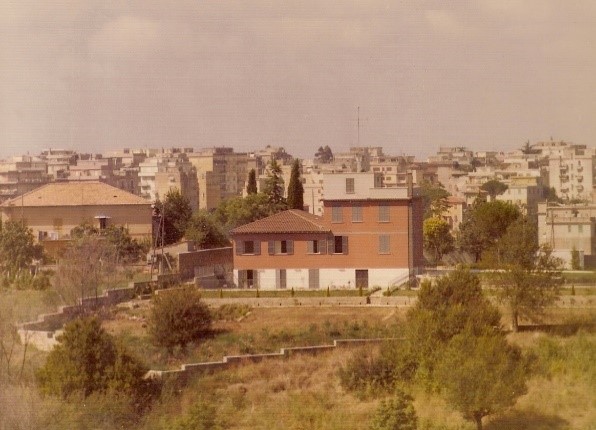
General House, in Rome 1975
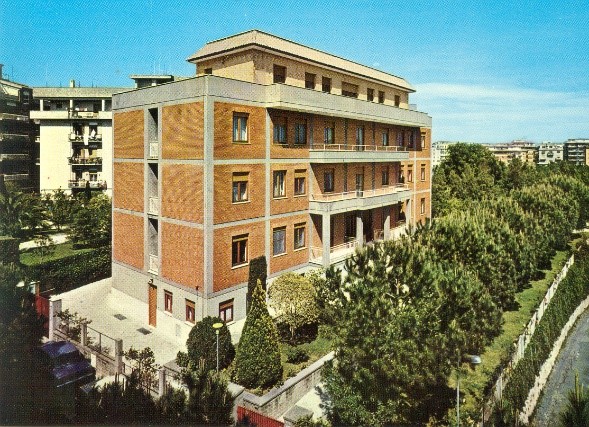
Pilgrimage House “Villa Mater Redemptoris”,
in Rome

The seat of the Hungarian Viceprovince in Linz
This Chapter made the decision to establish a Hungarian Viceprovince from the sisters, who lived in the free world. The task was carried out in 1966. The seat of the Viceprovince was in Rome. Later, the seat was moved to Linz in Austria.
In 1975, the Congregation for Religious commissioned the General Chapter, held in Rome, to elect a new Superior General. Sr. Donata Koppi, from the Austrian Province, was elected as a Superior General. Sr. Archangela became the Provincial Superior of the Hungarian Province.
In 1989, the communist regime in Hungary fell. Normalization began with considerable difficulty. In 1990, the Hungarian Viceprovince was united with the Hungarian Province. Sr. M. Rita Balogh, the Superior of the Viceprovince, became the Superior of the Hungarian Province. Here, the difficult but also promising tasks of a new beginning and building awaited her. First, Sr. Rita sought to get the buildings of the Province back from the state, so the sisters have a place to live and start their apostolate.
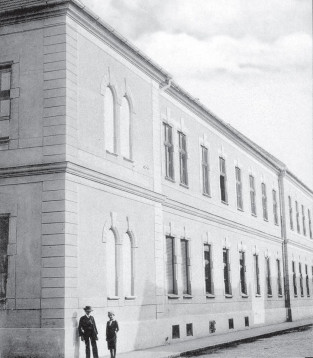
Flenger Institute, in Nové Zámky
The first house of the Congregation in Slovakia was established in 1876, in Nové Zámky. The sisters were devoted to educational work. In the year of 1899, they also began to care for the sick in the hospitals in Prešov, Bardejov, and Rožňava. In 1918, after the World War I and the collapse of the Austria - Hungarian Monarchy, the Czechoslovak Republic was established. As a result, in 1924 the Czechoslovak Province with 8 convents was established. The seat of the Province was the Flenger Institute in Nové Zámky.
In 1930, a new Provincial house was built. From 1924 -1939, other 10 convents were opened. In 1939, the southern part of Slovakia fell to Hungary. Fourteen convents, included the Provincial House, fell to the Motherhouse in Sopron. The remaining Slovak convents had to start their own new way. The convent in Spišská Nová Ves became the Provincial House. The Lord granted the Province many vocations, so the sisters quickly could take over new places of work. In 1945, the southern part of Slovakia was reconnected to the Czechoslovakia. In 1950, the Province had 441 sisters in 36 convents.
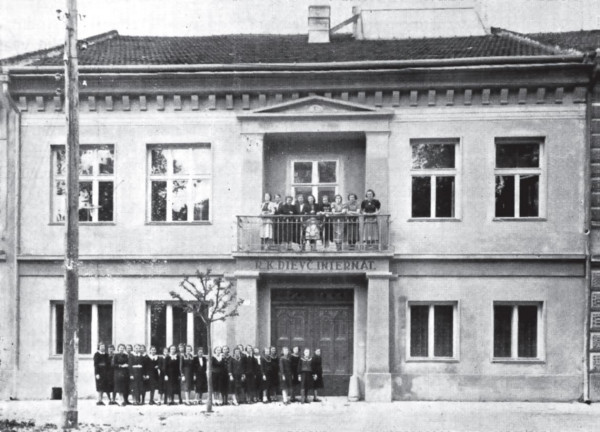
Provincial House, in Spišská Nová Ves
Unfortunately, in 1950, the Slovak Province also started a long journey of suffering, as it was in other countries of the Eastern Bloc. The sisters had to leave their work in schools, dormitories, kindergartens and baby care centers, and later also hospitals. They were forced to live in concentration camps under the state control. The sisters, who were able to work, had to work at states properties, in fields and during winter in factories. Old and sick sisters lived in religious houses under the state control. For many years the sisters had to work hard in factories in the Sudetenland of Bohemia. At the end of 1950’s and the beginning of 1960’s, the sisters could only work in the institutions for the sick and mentally ill residents.
From 1950 – 1968, the Religious Orders were forbidden to admit novices. From 1968 – 1970, in the period of so called “Prague spring”, the new members were officially accepted into our Congregation. At this time, the sisters taught Religion in different places of Slovakia. In 1973, the political situation had worsened. The new sisters had to take off their religious habit. They were under state control and bullied. Admission of new members had been banned again. After 1975, the Provincial Government took a risk and admitted new candidates under strictly secret conditions. Although the situation was very hard, the Superior General saw to keep contact with the sisters and encouraged them.
From 1973 – 1989, 70 sisters were secretly admitted into our Congregation, After the so-called “Velvet Revolution”, on November 17, 1989, the communist regime began to fall. In 1989, the Province had 317 sisters. In 1990, the sisters, who lived as civilians received habit and started to work in new apostolic fields of the Province: teaching, working in hospitals, seminaries and parishes. From 1990 – 2001, entered into our Congregation many sisters. The enthusiasm of the new beginnings was great!
With the establishment of borders after the World War I in 1921, it became a federal state, Burgenland from the former western Hungary 9. At this time, in the territory of Burgenland our Congregation had several convents, the first one in Neusiedl am See (1874), established still from Sopron. Here, the sisters opened the first kindergarten in the country.
At this time, new convents were established in Eisenstadt, Steinberg and Rechnitz. In all of these facilities sisters were active in educational and upbringing work. They taught in various types of schools, and raised children in kindergartens and an orphanage. The seat of the Provincial Government of the Austrian Province was in Eisenstadt - Margaretinum. It was a former house of music, where Joseph Haydn (1761-1778) rehearsed his concerts. In 1924, the sisters opened a Teaching Institute in Steinberg, which existed until 1938.

The first convent in Neusiedl am See
The number of the sisters and houses grew as well as new kinds of apostolates, according to the current need of the time. In 1929 , the sisters started to work in hospitals, nursing homes and assisted living institutions.The positive development was broken by the World War II. The sisters were banished from their houses and all educational activities were forbidden. Some sisters started to work in administration or nursing and some became organists or sacristans.
During seven years of Nazism the number of new vocations decreased. Yet, in this time of need and lack, many people experienced selfless and sacrificial service of the sisters. After the war, the sisters returned to damaged and ruined places of their previous places. Under the hard conditions they started the reconstruction of buildings so they could start to teach as soon as possible.
From 1945 – 1955, the Burgenland was occupied by Russians. It was still a demanding situation. In 1955, when Austria finally gained state independence, for decades, the Austrian Province became a “bridge” for the Provinces behind the “iron curtain”. The sisters, who crossed the border into Austria, were cordially welcomed. In 1948 the sisters started to work in the Mercy Brothers’ Hospitals in Graz Eggenberg and in 1950 in Salzburg. Due to the small space a new Provincial House was built. Its construction was completed in 1969. The schools in Eisenstadt, Neusiedl am See and Steinberg were still enlarged and rebuilt.
In collaboration with laity, the sisters still perform a pedagogical role in the Christian spirit, care for the elderly and the sick, act in pastoral role and tend to the needs of the times.
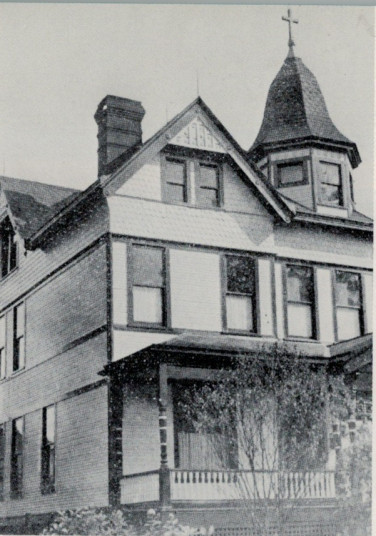
First Provincial House,
St. Stephen's Convent McKeesport
Pastor Kálmán Kováts in McKeesport, Diocese of Pittsburgh, asked the sisters in Sopron to come to America. The first four sisters came to the States in 1912. They, especially, cared for Hungarian families, who had immigrated to the USA. The sisters taught the children, cared for the sick, collaborated with parishes, and, especially, brought children “The Good News of Jesus”. This was done in the family kitchen. The Sisters travelled to Elizabeth, North Braddock, Allegheny, Homestead, Daisytown and Pittsburgh.
The area of work increased. More sisters from Hungary were needed. But World War I (1914 -1918) stopped communication between Europe and the USA. Superior, Sister Sabina, travelled to Sopron in 1920. She returned with 13 sisters in 1921. New communities were opened in Philadelphia, Hazelwood, Toledo, and in Ohio. In 1926, the summerhouse with land around it was purchased in Elizabeth, Pennsylvania. It should function as the Provincial House. It was enlarged and rebuilt, so it could serve the challenges of the new Province.

Villa Teresa, in Darby
In the States of New York and Ohio new houses also were established. More schools and hospitals were taken over. Work which started small, spread over long distances. In 1933 the American Province was given the legal Status under the laws of Pennsylvania as a Juridical Person.
In 1936, the Province purchased a house in Darby, that was the Scott Mansion and Estate. The building was adapted for an orphanage and retirement home.
The number of sisters who spoke the English language increased. Since 1943, retreats had to be held in two languages – in English and Hungarian. In 1948 and in 1955, several Hungarian sisters came from Europe to the United States. They helped with the work in the Province. A new Motherhouse and a big chapel were built in Elizabeth from 1959 - 1961. In 1964, the Province had 131 professed sisters, 12 novices and 2 postulants. The sisters did their apostolic work in the spirit of Blessed Alphonse Marie in education, religious instruction in parishes, in nursing homes and in hospitals, and in caring for the elderly and sick in their homes.
The period after the Second Vatican Council was for the American Province a great challenge. Some sisters left the community. The General Chapter in 2011 changed the structure of the Province to the Region. The prayer apostolate is the most important activity for the American Sisters today. They take it very seriously. They pray for all, who petition them for their special needs. Together with the associates and benefactors are the leaven of their lives.
From the foundation of Mother Alphonse Marie Eppinger several Congregations developed. In this time, three of them exist. All three, which arouse from one basis and live the charism of the spiritual heritage of Mother Alphonse Marie, are interconnected and cooperate well. All of us are happy from the beatification of Mother Alphonse Marie, held on September 9, 2018, in the Cathedral of Strasburg. More about her beatification:
http://www.alfonza-maria-eppinger.com/
The General Chapter of 2017, with its decisions and recommendations, entrusted tasks to the General Leadership, which shall be performed in the following six years. One of the tasks is to move the seat and to sell the house of the Generalate in Rome, Via del Casale Piombino 14. On April 27, 2019, the Generalate moved from Rome to Eisenstadt, Austria.





